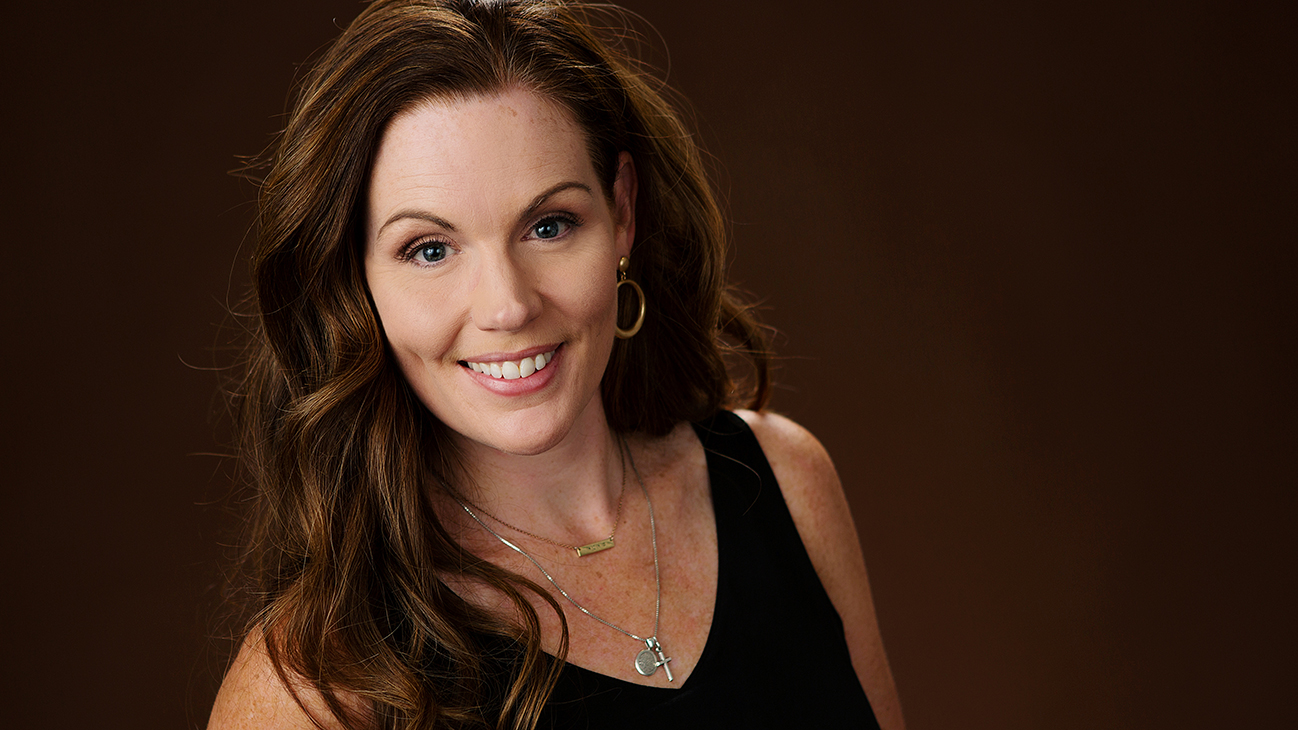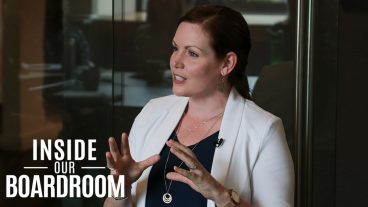On Bell Let’s Talk Day, we’re sharing the incredibly inspirational story of Dr. Robyne Hanley-Dafoe on how she found the strength to stop stigma from defining her life story.
Today, Robyne’s a sought-after speaker and an award-winning psychology instructor who specializes in resiliency, optimizing stress, and wellness. But for too long, Robyne let stigma write the story of her life. She was told that she would not see 18 years old, and grew up believing that she was broken because she suffered from poor self-esteem and mental health issues.
Writing for Unsinkable — Olympian Silken Laumann’s story-sharing platform focusing on mental, physical, and spiritual health — Robyne shared her journey back from “rock bottom”, and how a fluke accident provided her with the strength she needed to take back her story.
My mental health challenges started as early as 8 years old and carried into my twenties. Living with depression and a fractured sense of self-worth was not even the hardest part. The hardest part was recognizing that the stigma and shame that I felt for decades and carried with me everywhere, from primary school all through to adulthood, was created by a society. Faceless people and noise shaped a collective consciousness that says people who struggle are broken. Well, society, I have taken the brokenness of my life, the years of hurt, embarrassment, shame, depression, rejection, fear, self-doubt–you name it, and I have created my personal masterpiece. I believe wholeheartedly that others can too. We can all be proud of the mosaic of our lives. My head, heart, and values are in alignment.
As a 16-year-old, I was completely lost. My days were dark and my future seemed to be something I could never catch. And yet miraculously, I was found clinging to the edge of the ice of the Otonabee River in the darkest hours of February 7, 1996. I was driving home one night as a blizzard rolled in. My driver’s license was weeks old, and the road conditions were treacherous for any driver. In the glow of headlights bouncing off walls of snow, I recall hearing a loud bang and feeling the dirt from my floor mat hit my face. Moments later, I felt my vehicle being swept away by a mighty force that my brain could not process. And then I felt it — a sudden and aggressive wave of water struck my face and engulfed the vehicle. I took one last gasp for air as my vehicle became my tomb. The cold water pierced every part of my body. Soon it began to fill my lungs. They burned. I wished my body to surrender quickly.
My thoughts did not linger on the fear; rather I embraced a memory of my mother. To this day, I still recall feeling deeply saddened that we were going to be apart. I did not want to die like this. In that moment, I recalled how my mom used to say, “Robyne can get herself out of anything — homework, chores, and even difficult situations. Robyne is a problem solver — Robyne can do hard things.” My mind made a decision and my heart followed suit. I was going to try to live.
Step 1: Get out of the seat belt. Step 2: Get out through the window. Step 3: Get to the top of the water which was completely black and my vision blurred. I couldn’t tell which way was up. The headlights lit the most eerie and frightful scene. I was completely disoriented in the deep, frigid waters. The vehicle was being pulled downstream and sinking with each passing second. I used the last of my energy to quiet my mind. I made the decision to let the final drops of air slip through my lips and follow the bubbles up.
When I reached what I thought was the surface of the water I felt ice and, at the same time, waves of exhaustion pulling me down. The current was pulling me aggressively downstream, dragging me under the ice. My winter coat and boots felt like cement. My body was fighting the edges of despair and once again part of me wished to surrender and make this end. But, I also knew I just had to get to the edge. My hands scrambled to grab the edge. I felt the flesh of my palms tearing as the ice ripped my frozen skin. I gasped my first breath of air — a million razor blades tearing my lungs apart. Every cell throbbed with exertion and screamed in pain. Waves of exhaustion and a nagging feeling of sleep took over me. Then I heard it — a faint sound coming from the darkness. Someone was out there! My mind was screaming but no sound escaped my lips. Finally, I heard his voice: “Help is on the way. I am Joseph.”
Believing in my bones that I can do hard things changed my life. After my accident, I made the decision to keep fighting and create a healthier self. The voice inside me that doubted and held me back for years was replaced that night with the steadfast belief that I could do hard things.
I believe one of the biggest barriers to asking for help is the stigma that persists around mental health in our society. Stigma is a social cancer. Stigma is also multifaceted. In my experience, the stigma of getting help differs from the stigma that I used to carry with me into my recovery. I felt stigmatized as someone who had experienced a mental health episode. I felt branded as someone who became broken in her adolescence and was therefore an unlikely candidate for a healthy future. I felt like a time bomb; at any moment, whatever I built could be lost.
A lot of life has happened since my teenage years. I can’t stress enough that my recovery was not linear. The dance of recovery is steps forward, back, to the left and now to the right, and then the tempo changes, and you have to relearn your new way of living over again. No recovery is straightforward. We need to be cognitively nimble to adapt and shift to the ever-changing landscape of what we need in order to be well. I am very much the person as I was back then, but I am better version of myself. The dark days of adolescence are very far behind me, yet I keep the miracle of my rescue close to my heart. I was given a second chance at life that night.
I still wrestled with negative thoughts years into my recovery. My mindset in adolescence became a self-destructive loop. But I learned how to recognize the patterns. For years, when life got too stressful, unpredictable and scary, my first thoughts went to a very dark place. I had to retrain my brain not to go there. I had to develop a script to meet the negative thoughts. My new script radiated self-compassion, strength, and a commitment to keep working – to stay in the race. Each time those negative thoughts hijacked my brain, I acknowledged them then asserted that I didn’t need them anymore because that way of thinking no longer served me. I would meet those thoughts without judgment or pressure; I would invite myself to envision another approach that was rooted in self-care, love, compassion, and body kindness – and a deep commitment to keep going.
I believe that our truest self is revealed in moments when we can either give up or get up. These moments shape our capacity to be resilient. I have experienced significant heartbreak and disappointments since my accident. New beginnings are not always smooth. Knowing that I can overcome seemingly insurmountable obstacles is part of who I am. I also believe that our parents’ voices and lessons can guide us in our darkest hours. Today, I live my true vocation: mother, wife, educator. I am living a life of service to others.
Read the whole piece here.
Described as transformational, engaging, and thought-provoking, Dr. Robyne Hanley-Dafoe’s keynotes provide practical strategies grounded in global research and case studies that help foster resiliency within ourselves and others.
Interested in learning more about Robyne and what she can bring to your next event? Email us at [email protected].




